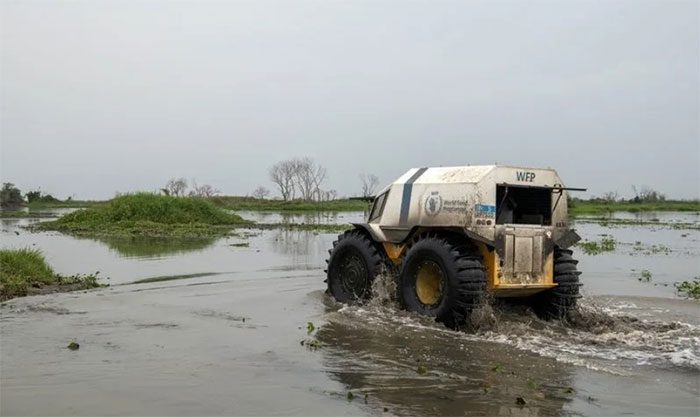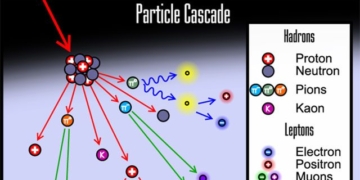The World Food Programme (WFP) has announced that starting in 2024, AI-integrated robot vehicles could deliver food packages to areas affected by conflict and natural disasters, helping to safeguard the lives of humanitarian aid workers.

WFP all-terrain vehicle driving through floodwaters in Twic East. (Photo: news.yahoo.com)
Speaking at a conference organized by the International Telecommunication Union (ITU) in Geneva, Switzerland, Bernhard Kowatsch, head of WFP’s innovation department, mentioned that early next year, WFP will test self-driving vehicles as part of the AHEAD project (Autonomous Humanitarian Emergency Delivery) in collaboration with the German Aerospace Center (DLR). AI will be utilized to integrate data collected from various sources, including satellites and sensors, allowing drivers to operate the vehicles remotely. South Sudan is expected to be the first location for this project.
Currently, approximately 7.7 million people in South Sudan are facing severe food shortages, while flooding complicates humanitarian assistance efforts. WFP is using around 50 amphibious trucks capable of carrying about 1-2 tons of food per vehicle in this North African nation. These trucks were first used in Aleppo, Syria, from 2012 to 2016, when humanitarian workers struggled to deliver aid to many besieged areas of the city. However, these vehicles still require a driver.
According to the United Nations, attacks on aid workers have increased in recent years, amid the highest number of violent conflict incidents since World War II. WFP alone reported the deaths of three staff members earlier this year due to conflict in Sudan.




















































